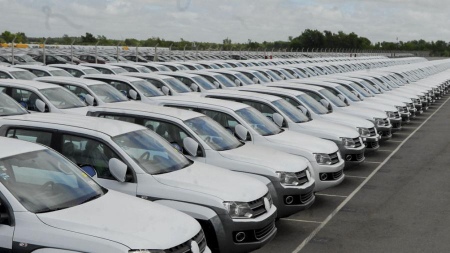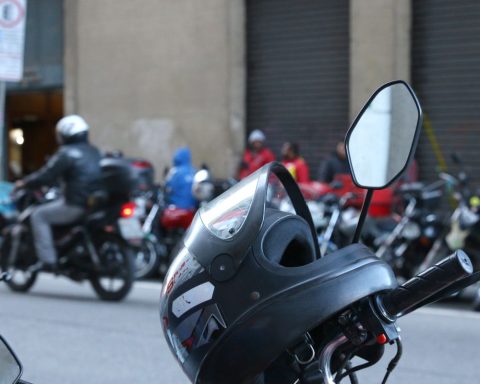Sales of 0 kilometer vehicles will exceed 400,000 units at the end of 2022, with an estimated increase of almost 7% year-on-year, and with a record participation of national models with a record amount equivalent to 65% of the total, according to the balance of the Association of Automotive Dealers (Acara).
This was highlighted by the president of Acara, Ricardo Salomé, noting that sales of 0 km vehicles will exceed 400,000 units per year, which is expected to be a floor by 2023 on a path of progressive recovery in the sector.
“The challenge is that the more than 400,000 units with which we hope to close 2022 are a floor for next year and that we can consolidate the market at these levels with the real possibility of increasing it from 4% to 6%,” the manager explained to lead the closing of the year with the Acara board of directors.
December advanced to a with an average sales of 1.20 units per day reaching 12,239 licensed vehicles, a figure that could rise to 18,000 vehicles at the end of next week, with an increase of 8% year-on-year.
The second semester of the year
In the second semester of this year, an acceleration of the recovery was observed with an interannual increase of 19% average, which is analyzed as a result of the low availability of imported units to complete the offer, a high exchange gap and an unavailability of instruments of saving.
The projection of the sector for next year is a market of around 420,000 units, although that figure could be higher “if some limitations in the offer of the terminals are exceeded” since it is considered that “consumer demand remains dynamic and partially unsatisfied.”
Despite the improvement registered in 2022 and the one that is expected to be possible for 2023, sales performance is still very far from the sector record registered in 2013 when 955,000 units were sold in the local market.
What is projected for 2023 “is a perfectly achievable figure if greater import release is achieved, because people will continue to demand vehicles and the challenge will then be to be able to supply themselves with more nationally produced models,” Salomé clarified.
Precisely, with a few business days to go until the end of the year, it was already anticipated that Acara 2022 will register the record participation of national vehicles of the total patented, since it is estimated to be 65% of the market, a figure that contrasts with 25%. of 2018 that registered an advance of the imported ones.
“This performance of national products is the result of the extraordinary effort of the entire value chain, which despite the difficulties has not stopped having a long-term perspective, and working with a horizon of sustainability and as a team,” said the owner of Acara.
When the final figures for December are still missing, it can be anticipated that, among the ten best-selling models in the country during 2022, seven are nationally manufactured, headed by the most chosen of the year that will once again be the Fiat Cronos that is produced in the Cordovan plant of Santa Isabel.
It is followed by the Toyota Hilux pick-up that is produced at the Zárate plant in Buenos Aires and that from 2023 will increase production with the implementation of a third work shift; the Peugeot 208 that the brand that is part of Stellantis produces in El Palomar, and the Volkswagen Amarok pick-up that also leaves the General Pacheco terminal.

The list of local models among the 10 best sellers is completed with the Renault Kangoo utility that is produced in the province of Córdoba, the Ford Ranger pick up that is manufactured at the General Pacheco plant and the Chevrolet Cruze sedan, from the terminal of General Motors on the outskirts of Rosario.
In terms of production, it is estimated that 2022 will close with some 530,000 units leaving the local terminals that make up the Association of Automotive Factories (Adefa), more than 25% higher than what was registered a year ago.
Of that total, about 250,000 will be cars, with a year-on-year increase of around 45%and some 270,000 light commercial vehicles with an improvement of around 12% compared to the accumulated figure registered in 2021.
Regarding exports from the local industry, it is expected that by the end of the year some 330,000 vehicles will have been shipped, 25% more than last year, with Brazil as the main market with 63.4% of the regional demand, since the one that is followed by countries of Central America, Colombia, Chile and Peru.
As a reference to the potential of the sector, 2022 will represent more than US$ 8,000 million of exports.
For this, the industry follows a strategy of specialization, where the terminals produce one or two models, on a large scale and with high added value, exporting an average of 60% of what it produces, and even in several terminals it reaches 80%.
The automotive industry increased work shifts to meet demand
During the year, the national automotive factories went through a production increase process that allowed them to incorporate new work shifts to supply the growing demand of the local market, and in particular the export market, accompanied by investments and development of new models.
It is the case of toyota argentina, the regional subsidiary announced in recent days that from 2023 it will incorporate a third turn at its plant in the Buenos Aires town of Zárate, a milestone that it will achieve for the first time in its local history to produce more than 180,000 units of the Toyota Hilux pickup.
Another automaker, Renault Argentina, began its second production shift in July at the terminal it owns in the province of Córdoba, with the incorporation of 300 workers, which allowed it to increase production of the Sandero, Stepway, Logan and kangoo.
Similarly, Nissan Argentina -a brand that together with Renault made an investment of US$ 700 million in the Santa Isabel plant in recent years- also added a second shift with the incorporation and training of 550 workers for its manufacturing lines of the Nissan Frontier pick, with which it plans to produce some 50,000 units a year by 2023.
Another of the terminals that added a second production shift is Fiat Argentina – a member of the Stellantis Group – for its Córdoba plant, where it produces the Cronos sedan, the best-selling car in Argentina in 2021 and 2022.
For its part, General Motors began production of the Chevrolet Tracker SUV at the Alvear plant, near the city of Rosario, after completing an investment of US$ 300 million in the modernization and adaptation of its facilities, which will double the output of units from that floor.
In a similar sense, Ford Argentina increased production capacity by 25% this semester at the General Pacheco plant where its Ranger pick-up comes from, within the framework of an investment of US$ 580 million that is still in process and that includes the incorporation of 400 workers in the plant.















